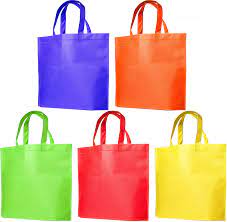
How to make the right choice when it comes to buying Persian rugs?
My tip on how to buy a Persian rug is to make sure you like the rugs aesthetically. Do you like the overall “look” of the rug? Do you like patterns and colors? Is the color-rich and clear? Is the group the same length and correctly cut? Is the size suitable for the area in your house where you want to place the carpet? Remember that you are looking at “single” carpets and some dimensions are pretty bad. It does not have to be in standard sizes. Also, keep in mind that real hand-knotted or woven oriental rugs are “absolutely imperfect”. A small discrepancy is proof that the carpet was made by hand, by the human weaver, not by machine. If the carpet has a slightly irregular shape and a slightly sticky appearance, it is also a sign of being “handmade”.
How do you know that the rug you are looking for is good quality? Here are some points to consider:
- A real oriental / Persian rug is made of natural materials such as wool, cotton, silk, goat, and camel hair, with wool being the most popular material for a stack of rugs. Your oriental rug made of natural fiber, like wool, will last in synthetic width and will be much healthier because no chemicals are released. Another consideration is KPSI or knots per square inch. It is assumed that the higher the number, the better the carpet. Persian rugs are traditionally made in cities and in the countryside. Each location has its own style and features. Country rugs have a lower KPSI. They have a bolder design and are more rustic and more informal. The low number of buttons does not mean that these carpets are not valuable. It just means they have a rougher and bolder look. These rugs do not need a higher number of buttons to achieve a distinctive image, and therefore the number of buttons is lower. Ultimately, it’s all a matter of taste. If the number of knots is below 70, I can recommend looking at another carpet. Remember that there are better oriental rugs that are traditionally made with a lower number of knots
- The classic carpet production centers in Persia include Tabriz, Kashan, Herat, and Kerman. The traditional style falls into 3 general categories: geometric, floral, or pictorial/curvilinear. Just choose what attracts you. Think about where you place the carpet. If it is to be used in a dining room where there is a table that occupies a large part, then choose a pattern with a “borderline” interest. The center medal is not good in this case.
- I recommend people to check the back of the rug or carpet. The pattern should be very clear and you should identify the individual nodes. When it comes to a handmade rug as opposed to a handmade rug, the knots are not as regular as the lattice. Small nodes are not always straight. Even with hand-knotted or woven rugs, fringe is part of the rug’s construction and is not sewn. The fringes form warp cords that protrude from the top of the carpet. Now fold the carpet in half. If it shrinks, it is not of good quality. A quality hand-knotted or woven rug can be folded and rolled up. It will always be placed flat when opened.
- Make sure the carpet/rug is well-finished. Also, make sure it lies straight.
- Make sure the seller is ready to guarantee that the carpet/rug is genuine. I’m always happiest when the rug/carpet is the first thing in a room. Oriental rugs are like paintings. It must be presented, or at least well presented. And it’s easier to “start” on the carpet. If you have furniture, consider your furniture when choosing a rug. If your furniture happens often, in other words, on the “busy” side, then you probably need a quieter design for your carpet. Also, be sensitive to color. There should be 3 large colored blocks in your room: the walls, the sofa, and the carpet, and all the other colors play in threes.


